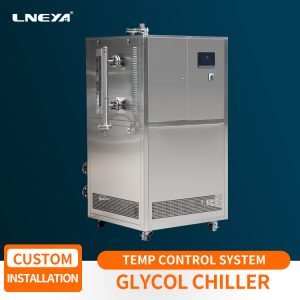What are the conditions for the decarboxylation reaction? How to control the temperature of heating?
The decarboxylation of aromatic acids is easier than that of fatty acids. For example, benzoic acid can be decarboxylated by adding a little copper powder as a catalyst in quinoline solution and heating.
When a strong electron-withdrawing group is attached to the α-C of the carboxylic acid, heating can make it decarboxylate more smoothly. For example: when the ortho-diaromatic organic acid is heated, it is easy to remove a carboxyl group, but when the temperature is low, an acid anhydride will be formed. When different polycarboxylic acids are heated, according to the different activities, some are decarboxylated, some are dehydrated, some are decarboxylated and dehydrated again, dehydration above pimelic acid, and general decarboxylation below.
Fatty acid: This reaction is generally not used to prepare alkanes for general fatty acids, especially long-chain fatty acids, because the reaction temperature is too high, the yield is low, and it is not easy to separate. However, if the α-carbon atom of the fatty acid has an electron-withdrawing group such as nitro, halogen, carbonyl, cyano, etc., it makes decarboxylation easy and the yield is high, but their reaction processes are not exactly the same.
The general decarboxylation reaction does not require a special catalyst, but is carried out under the following conditions: (1) heating; (2) alkaline conditions; (3) coexistence of heating and alkaline conditions. The most commonly used decarboxylation method is to heat the sodium salt of carboxylic acid with soda lime (CaO + NaOH) or solid sodium hydroxide, and a decarboxylation reaction occurs, that is, -COONa is replaced by an H atom to generate a carbon atom less than the sodium salt of carboxylic acid alkanes.
It can be seen that no matter the decarboxylation reaction of any substance, it is necessary to carry out temperature heating control during the reaction process. Specializing in the production and development of heating systems, the temperature control range is 50 degrees to 300 degrees, which is suitable for the needs of various process production and experimental use in pharmaceutical and chemical enterprises. It can realize high temperature cooling process, directly cooling from high temperature of 300 degrees to 50 degrees. Equipped with a heating and cooling integrated container, the heat exchange area is large, the heating and cooling rate is fast, and the demand for heat transfer oil is small. The entire cycle of the product is closed, there is no oil mist volatilization at high temperature, and the heat transfer oil will not be oxidized and browned; it has the function of correcting the internal cycle temperature probe PT100, and has self-diagnosis and intelligent safety alarm. The equipment is equipped with a variety of safety protection functions such as high-voltage pressure switches, overload relays, and thermal protection devices to ensure the safety of your experiments and production.

관련 권장 사항
-
Cooling and heating system TES for integrated circuit wafer cooling method
1144Integrated circuit products have been developed for more than 50 years and are the most advanced high-tech industries. Integrated circuit or chip / chip. The complete chip manufacturing process includes chip design, wafer manufacturing, package ma...
세부 정보 보기 -
Cooling and heating temperature control equipment for liquid distribution system
919The cooling and heating temperature control equipment of the liquid distribution system is a dynamic temperature control system produced by LNEYA. When we purchase the cooling and heating temperature control system of the liquid distribution s...
세부 정보 보기 -
원자로 수냉식 냉각기 미사용 시 전원 차단 시 주의사항
1138When the reactor water-cooled chiller hascomplete accessories, in actual use, it is necessary to provide it with regularrest time. In order to maintain stable performance of the chiller duringlong-term operation, users need to master the method...
세부 정보 보기 -
What are the maintenance of glycol chillers in daily operation?
1248In the daily operation of the glycol chiller, if the maintenance is not in place, the cooling effect will be reduced. Therefore, in order to improve the operating efficiency, we recommend that you carry out the necessary daily maintenance. Refrig...
세부 정보 보기
 LNEYA 산업용 냉각기 제조업체 공급 업체
LNEYA 산업용 냉각기 제조업체 공급 업체













